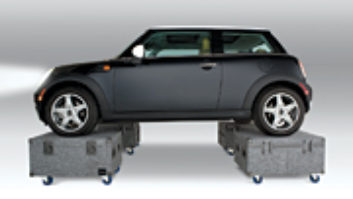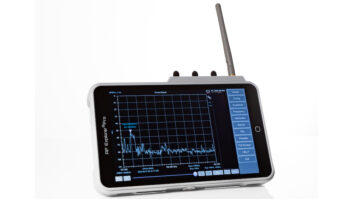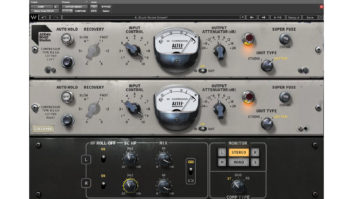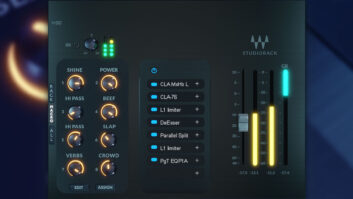Seamon Fenton, with
Invisible Waves software.
by Seamus Fenton.

I have been a monitor engineer for some time now. Though I don’t consider myself an “RF guy,” monitoring radio frequencies seems to be a part of my job. Over the years, I have tried to absorb as much information as possible, from the various people I have worked with who do know about the black art that is the wobbly world of RF (thank you, Sir Barold).
One of the most important things I’ve learned is that when dealing with multiple frequencies? It is essential to have a plan. It amazes me how many festivals or gigs exist where there is simply no RF plan. Or even worse, a lack of regard for the importance or possibility of such! So to avoid as much confusion as possible and make this all-important plan, I’ve discovered a very helpful thing: a radio-frequency analyzer.
This brings me to my new essential toy, the Invisible Waves PC-based RF spectrum analyzer (Model IW1800).

Every show day, my first task is to perform the RF sweeps (one of the great things about the Invisible Waves analyzer is the battery pack. It means I can start work immediately without needing to power up the monitor rig). On my current tour, I have in-ear monitor systems and radio mics that need to be global, requiring different frequency ranges for each country. In an effort to make each show run smoother, I save a profile for every location in my IW analyzer, enabling me to complete a scan for each of them quickly. The scan is then converted to a JPEG and exported to a folder, allowing me to keep records of the RF environment of every location. As I complete another scan just before show time, I can compare my current findings with my morning sweep. This is a very important function, as most TV crews, particularly in other areas of the world, show little regard for frequency planning or arriving in time for soundcheck.
In addition to doing pre-show comparisons, I use the morning scan to avoid existing interferences. Using my IW analyzer, I can easily see where problematic things are, such as TV stations, by placing markers in the spectrum trace view and pinpointing the frequencies I want to avoid.
Occasionally, when my intermodulation calculator locates available frequencies that are not large enough to fit all of the frequencies I need, I simply go back to the IW scan to find smaller holes, away from the main bunch, to fit into. Often, I use the IW’s Region of Interest (ROI) view to achieve this, as it enables me to zoom in on smaller spaces. This proved very efficient when I did a show in New York, with Cirque du Soleil using a 30-frequency region in the venue below us.
During my shows, I keep my Invisible Waves analyzer running in the background, monitoring everything. For me, the most important window on the screen is the Monitored Frequency View. It has 10 frequencies, all of which can be named, that appear as bars and are updated during each sweep. If the unthinkable happens, and something stops transmitting, the analyzer will show the problem quickly.
To sum up, if I’m dealing with RF on a show, particularly in-ear monitors, never again will I do it without an analyzer. The guesswork of the old days fills me with horror, and this analyzer makes more sense to me than any other one I have used.
All in all, the Invisible Waves analyzer is a tool that no monitor engineer should go without.
*Note to Readers: Seamus Fenton’s RF management and monitor engineering resumé includes such artists as Sarah Brightman, Goldfrapp and the Pet Shop Boys. This article was provided to Pro Sound News by Kaltman Creations, the manufacturer of the Invisible Wave RF Analyzer system.






